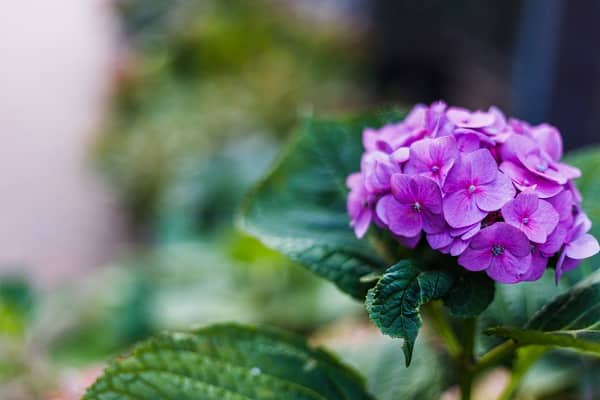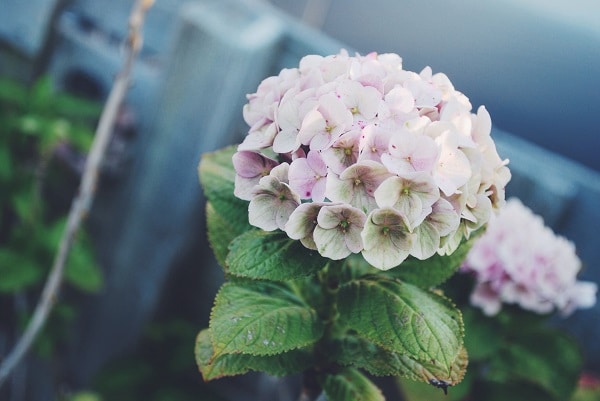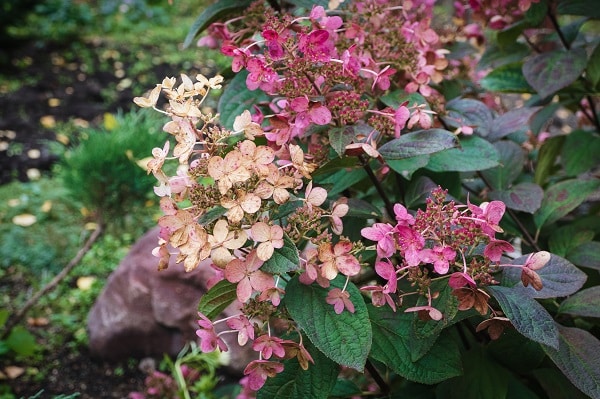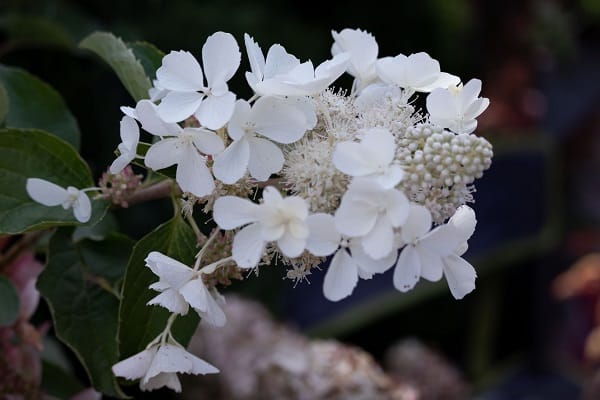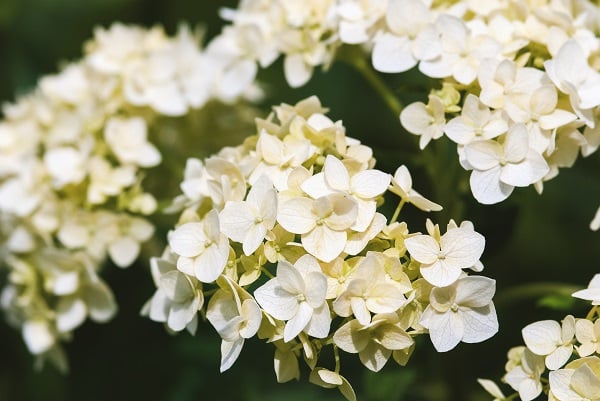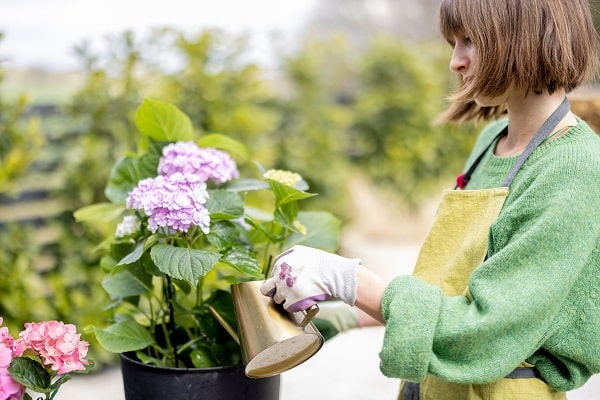If you’re looking for a flowering shrub that is easy to care for, hydrangeas are a great option. There are several types of this unique plant, and each one has its own particular needs. So depending on where you live and what you’re looking for, there’s sure to be a hydrangea variety that will fit your garden perfectly. And to help ensure their growth, this article will discuss the best time to plant hydrangeas as well as the different types of hydrangeas. So by the end of this article, you’ll know everything you need to start your hydrangea garden!
Contents
What Makes Hydrangeas Unique?
Hydrangeas are a unique flower variety renowned for their vibrant colors and stunning appearance. However, its efficient blooming process makes this species so distinct from other plants. Hydrangeas have a remarkable ability to form buds with ease and quickly expand those fronds into full-grown petals.
As if that weren’t enough, the hues of these petals are also mesmerizing! Depending on the soil pH balance in which they grow and by using different materials, it is possible to alter their natural hue. This adaptability, as well as their vast range of colors, make hydrangeas hard to miss in any landscape, leaving a lasting impression on all viewers!
The Different Types Of Hydrangeas
Like many other plant species, hydrangeas come in various shapes and sizes. So before deciding which type of hydrangea you’d like to plant in your garden, it is helpful to get a better understanding of each of the available varieties.
Bigleaf Hydrangeas
Bigleaf Hydrangeas are a type of deciduous shrub native to the Southeast United States and East Asia. Offering year-round interest, they produce beautiful white or pinkish flowers in late summer, excellent autumn foliage, and even colorful bark in the winter. They are an incredibly versatile and stylish pick for nearly any garden design aesthetic since you can arrange the leaves formally or in more whimsical, fluffy arrangements.
Panicle Hydrangeas
Panicle hydrangeas, or Hydrangea paniculata, is a unique type of flowering shrub. It is native to East Asia, typically in China and Korea. Its dazzling beauty offers colorful blooms throughout the summer months. The flowers start off as white panicles but then change colors as they mature, ranging from pink to purple. Many gardeners prefer panicle hydrangeas for their hardiness since they can withstand various weather conditions.
Oakleaf Hydrangeas
With petal-shaped green leaves that turn a rust color in the autumn, oakleaf hydrangeas offer an exquisite view in any backyard or garden. Though they may look fragile, oakleaf hydrangeas can withstand freezing temperatures and some drought conditions, making them a wonderful addition to your landscape no matter what type of soil you have or the climate you live in. And for those who love hydrangea blooms, don’t worry—oakleaf hydrangeas produce beautiful white flowers from June to August!
Climbing Hydrangeas
Climbing hydrangeas are elegant vining plants that add a unique layering of texture to any outdoor space. They can be trained up walls, trellises, or fences and will reward gardeners with delicate blooms in summer. If planted in the right spot, these hydrangeas will slowly grow and naturally intertwine with their surroundings like living art. Of course, these cool-season lovers require extra effort when it comes to maintenance, such as regular pruning and moist soil environments, but they are truly worth the effort!
Smooth Hydrangeas
Smooth Hydrangeas, or Hydrangea arborescens, are a hardy species native to North America. These shrubs produce clusters of white flowers in late summer and can reach up to 8 feet tall if left untrimmed. This species is incredibly easy to care for and requires minimal watering once established. Additionally, the smooth texture of the leaves gives these hydrangeas a unique and elegant look that sets them apart from other types.
The Best Times To Plant Each Type Of Hydrangeas
The best times to plant each type of hydrangea vary from species to species. In some cases, the best time to plant hydrangeas can depend on your climate, your soil type, and even your specific area’s rainfall patterns. However, here is a general guide for each type:
- Bigleaf Hydrangeas: This variety will do best when planted in early spring.
- Panicle Hydrangeas: Plant these in the late winter or early spring.
- Oakleaf Hydrangeas: These hydrangeas should be planted either in the late winter or fall.
- Climbing Hydrangeas: The ideal time to plant climbing hydrangeas is during the summer months.
- Smooth Hydrangeas: Smooth hydrangeas are best planted in either fall or early spring.
If you are unsure of the effect your environment will have on each species, it is best to consult a local nursery or gardening expert for advice specific to your area.
Tips For Caring For Hydrangeas
When it comes to caring for your hydrangeas, there are a few essential things to keep in mind.
1. Hydrangeas need plenty of water to thrive. So make sure you regularly water your hydrangeas and provide enough moisture throughout the growing season.
2. Proper fertilization is essential for healthy growth and blooms. Choose a fertilizer formulated explicitly for hydrangeas and be mindful of the application instructions.
3. Prune each type of hydrangea differently depending on when they flower. Consult a gardening expert if you need help with how to prune and care for your specific type of hydrangea.
4. Mulch can help reduce weeds, retain moisture, and insulate the roots of your hydrangeas during colder months.
5. Remember to deadhead your hydrangeas after blooming! This will ensure that the plant is able to focus its energy on producing new and healthy blooms next season.
6. Finally, be mindful of the signs of disease or pests in your hydrangeas. If you spot any unusual growths or discoloration, take action quickly and contact a gardening expert for advice.
Hydrangeas can add a touch of elegance to any garden, but they do require some special care to ensure healthy blooms every season.
Planting Hydrangeas Is Simple!
There’s a hydrangea to suit almost any need. From tiny potted plants to enormous shrubs, they come in all shapes and sizes and can be used to add texture and color to outdoor spaces. With careful planning and proper knowledge of cultivation, any gardener can create a lush hydrangea display that invites the eye and brings delight to all who see it. With their unique beauty and low maintenance requirements, hydrangeas are sure to be an attractive addition to your garden!
